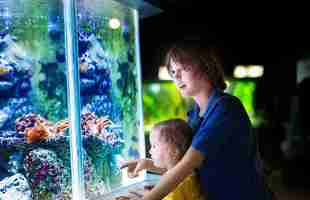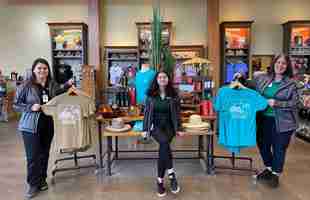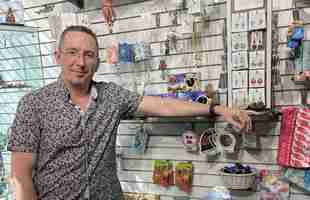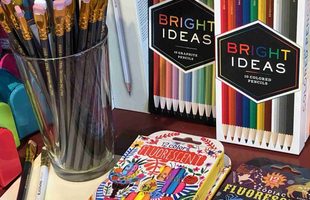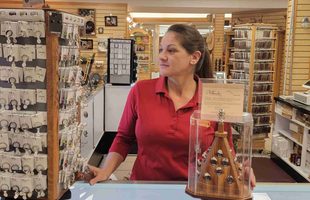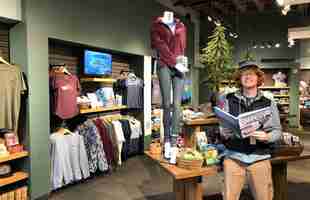With zoos open again for happy guests to explore, zoo gift shops are also open, and able to sell merchandise. And among that merchandise is jewelry – with many items exhibiting a specific emphasis on the support of conservation efforts and other worthy causes.
At the Woodland Park Zoo in Seattle, Wash., Gift Store Manager Victoria Demers explained that due to the pandemic, the zoo has consolidated all merchandise in one gift shop. Moving from several shops to just one single location makes display more limited. “Because of that, we’re only carrying a few jewelry items presently,” she said. And of those items she now carries she has selected a type that fits well with the zoo’s own aesthetic. “Our focus is on those jewelry lines that have an environmental-support back-story, that feature something sustainable in their creation. For example, Pura Vida jewelry, which sells very well for us, uses sustainable elements in crafting the jewelry, and gives back to environmental causes in Costa Rica with every piece that they sell.” The collection includes everything from beaded to woven fabric jewelry. It’s handmade, and it also provides paid work for artisans around the world. The price point is also fairly low, Demers noted, and that attracts buyers, too, she said.
To sell more jewelry, Demers relies on display. “We have spinner racks, but again, right now, space is limited. Along with the environmentally-supportive jewelry items, we also have some fun pieces for younger shoppers with animal trinkets or fake teeth, and mood necklaces, which are always popular. I think what makes these particular items sell well is the message behind the jewelry, as well as the prominent display. The idea of jewelry that ‘gives back’ is very important to people.”
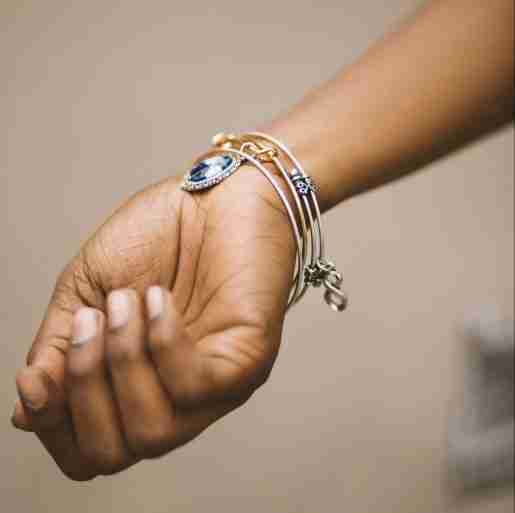
In Austin, Texas, at the Austin Zoo, Director of Administration and Gift Shop Buyer Kim Sessions said the zoo has closed the zoo’s usual indoor gift shop. “Instead, we have moved our merchandise into the Peacock Barn, which was formerly an outdoor event space. It’s a lean-to- like venue of about 200 square feet,” she related. “The air flow is excellent, and we restrict browsing so that shoppers can look at items, but not physically touch them.” Because of reduced merchandising space and COVID-19 restrictions, the zoo gift shop is only displaying a portion of the jewelry it normally carries, she said. “Display is the best way to show anything and increase sales, honestly. But being outside, it’s hard to display certain small jewelry items that we might’ve previously shown in baskets, when you are standing 2 to 3-feet away from something.” That said, the items she currently carries have a similar charitable focus to the jewelry items at the Seattle Zoo. “We carry items that give back, for example, jewelry from Miracle in Action Beads, which do very well for us both now and pre-pandemic. They benefit environmental efforts and employment in Guatemala. We also have carried some bracelets that give back to conservation organizations.” She noted that “For a certain percentage of people who are buying jewelry, they are more apt to purchase an item if they feel that by making that purchase they’ve done some good in the world.”
Despite her current display and merchandising space limitations, Sessions said that “The Miracle in Action Beads are still popular. The bright colors are very appealing. Along with jewelry, they also make key rings that we display.”
“Instead, we have moved our merchandise into the Peacock Barn, which was formerly an outdoor event space. It’s a lean-to-like venue of about 200 square feet. The air flow is excellent, and we restrict browsing so that shoppers can look at items, but not physically touch them.”
– Kim Sessions, Austin Zoo, Austin, Texas, commenting on moving the indoor gift shop to another location.
At the Cleveland Metroparks Zoo, located in Cleveland, Ohio, Assistant Director Heather Hendricks also focuses on display in the store to sell more jewelry. “We don’t really use social media to promote that. We do use looped video in our store for our 4ocean environmentally supportive line. The video is an explanation about the jewelry, screened on a television placed near a free-standing display.” Similar in supporting the environment is the This is Your Seed brand of jewelry, Hendricks reported. “They have what they call a ‘one tree mission,’ planting trees for conservation for each item sold. We keep printed information on the missions of both these jewelry lines near the displays, which also helps to sell them.” Her best-selling jewelry for ages teen to adult are 4ocean and the Pura Vida line. She said that the trendy styles are just as appealing to customers as the message behind them. “I do think the message comes across well in our store, however, and it’s appropriate for our venue to support conservation.” For younger buyers, she said, “Girls like birthstone type jewelry; boys like shark’s tooth items, and the kids like animal charm bracelets. The majority of what we carry, however are the fashion bracelets.”
Her top jewelry display tip? “We use a general jewelry spinner rack that we will be moving to a wall display soon, we keep some items on the check-out counter. We also have jewelry merchandised throughout the store, not just in one place. Cross-merchandising works for us, because of the message behind the items. It’s helpful to see it throughout the store.”
“Girls like birthstone type jewelry; boys like shark’s tooth items, and the kids like animal charm bracelets. The majority of what we carry, however are the fashion bracelets.”
– Heather Hendricks, Cleveland Metroparks Zoo, Cleveland, Ohio
At the Roosevelt Park Zoo, in Minot, N.D., Public Program Manager Andrea Tronson said the best ways to sell more jewelry at the zoo’s gift shop are “Offering items at the right price point, having a good, conservation message behind the items, and presenting attractive displays.” For Tronson, the emphasis on “back-story” for jewelry is very important. “That back-story is what really sells for us here. We have pieces that currently that do very well and are made from natural wood, we have animal print necklaces, and we have some locally made items, such as bracelets. Our jewelry all helps the enrichment program here, it benefits our programs at the zoo directly. That draws shoppers.” She noted in that in the past, she did carry jewelry similar to that at the Cleveland Park Zoo, which benefitted a wider range of organizations supporting the global environment. As far as display tips, she agreed with Hendricks. “For us, cross-merchandising jewelry items throughout the store works the best. We have bracelets on a spinner, but most of the other pieces we carry are hanging in different areas of the gift shop. People are able to see the jewelry we offer in different parts of the store.”
So, despite some smaller or pandemic-restricted shop locations and merchandising, at zoos nationwide, jewelry sales – like all gift sales and the zoos themselves – are roaring back to life with the help of visitors who enjoy seeking nature and animal life, and who support conservation.
